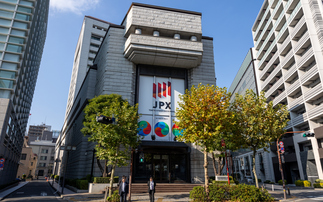Gavin Blair speaks to Nobusuke Tamaki, director general, planning department at Japan's Government Pension Investment Fund (GPIF) - the world's biggest pension fund - about record profits, deflation and deficits, as well as increased scrutiny from a new government
Gavin Blair: The GPIF had a strong fiscal 2009, [ending 31 March 2010] with a record ¥ 9.2trn yen profit.
Nobusuke Tamaki: This was mostly accounted for by the recovery in the global equity markets, domestic stocks were up 29.4% and international stocks up 46.11%. In absolute terms, there were gains of ¥3.35trn [$40.75bn] from domestic stocks, and of ¥4.18trn [$50.45bn] from international stocks.
Gavin Blair: In the first quarter of 2010 [April to June] the fund was down a lot [-¥ 3.59 trn] but then came back strongly in the next quarter.
Nobusuke Tamaki: Yes, and in the July to September quarter it recovered about half of that. It was again largely down to global equities – everybody plays in the same markets.
Gavin Blair: Was the GPIF able to take advantage of the times when prices have been lower to invest in equities?
Nobusuke Tamaki: As of now we don’t elaborate on the quarterly or monthly operations; we just disclose the performance and the actual asset allocation.
Gavin Blair: There has been a lot of talk recently about the government having to use reserve funds to pay pensions.
Nobusuke Tamaki: What’s been made public is the budget of the government, and the Pension Special Account (PSA) is a part of the overall public finances. Each account has a budget that has to be approved by the legislature. For this fiscal year, the PSA has a figure that has to be returned from the GPIF to pay the benefits, which is a little more than ¥6trn. So, one way or another, we have to prepare cash for that.
Gavin Blair: So if this is what usually happens, why is there so much media focus on it this year?
Nobusuke Tamaki: Last year, ¥3.947 trn was withdrawn. The cash that was needed for this largely came from the redemption of FILP bonds (Fiscal Investment and Loan Program, also known as Zaito bonds) which are held to maturity. Redemption is one way to convert our assets into cash, and we make use of as many ways to do it as appropriate. The total amount of cash to be moved from the GPIF to the PSA is already budgeted. How we do that is now an on-going process. In 2009, the government did withdraw cash. In 2008, we were still in the transition period from the previous investment regime. Prior to that, the whole reserve fund of the PSA was deposited with the Ministry of Finance. So if the PSA needed cash to pay benefits then they, as the deposits were redeemed, took what they needed to fill the gap and transferred the rest to the GPIF. So until fiscal 2008 there was no need for cash to be moved back to the PSA from the GPIF. But last fiscal year, 2009, they did need cash to be transferred back to the PSA. So it’s true the government does need to use cash moved back from the GPIF to pay pensions. That’s as budgeted by the government.
Gavin Blair: But at some point this money needs to be replaced.
Nobusuke Tamaki: Well it depends on the economy. If say, the economy was to grow by 20% per year, and peoples’ wages went up, then our inflows into the PSA would increase.
Gavin Blair: That’s highly unlikely though.
Nobusuke Tamaki: Yes, that’s not highly likely. But the cash balance of the PSA does reflect the economic situation to some extent. Of course it does reflect demographics - that’s the most important factor. But at the margin, it also reflects the employment situation, when wages and contributions go up and down.
Gavin Blair: But they can’t keep doing that every year.
Nobusuke Tamaki: Well, we could, but of course the fund would be depleted. The pension contributions are being phased up. The Japanese working generation is paying more contributions than last year. According to the long-term actuarial evaluations, the gap is temporary and in the middle of the century the reserve fund will grow again. The baby boomers, born around 1947, they are now 63, and in 20 years, they’ll be 83. Not all of them will survive 20 years. The bulge of the pension benefits, as we move along the time horizon, will pass, and contributions are rising. So we’re in the process of restoring the balance.
Gavin Blair: But the workforce is shrinking, so contributions will have to be increased quite considerably. If the workforce shrinks to half its peak, will they have to double?
Nobusuke Tamaki: There are many variables for the long-term actuarial evaluations: demographics, longevity, how fast the workforce is going to decline, which way the economy goes and whether deflation is cured. Based on various sets of assumptions: pessimistic, neutral and optimistic, the Ministry of Health, Labour and Welfare makes projections every five years. According to these, the reserve fund will shrink through a certain period, and then bounce back. Contributions are currently around 16% for Employees’ Pension, they won’t need to increase to 30%.




